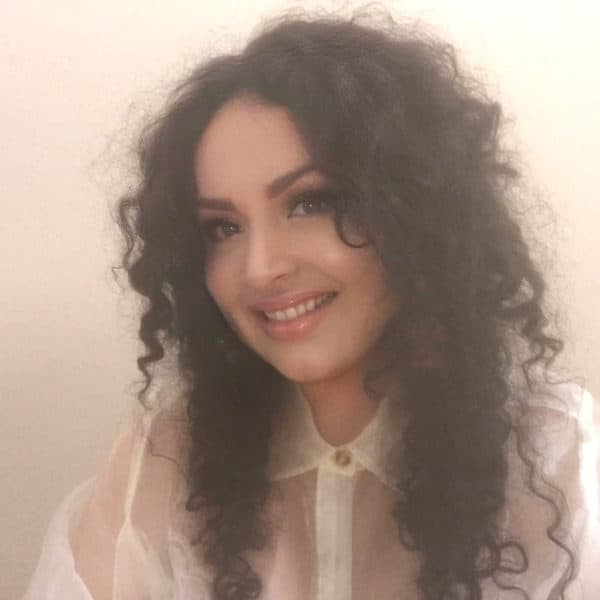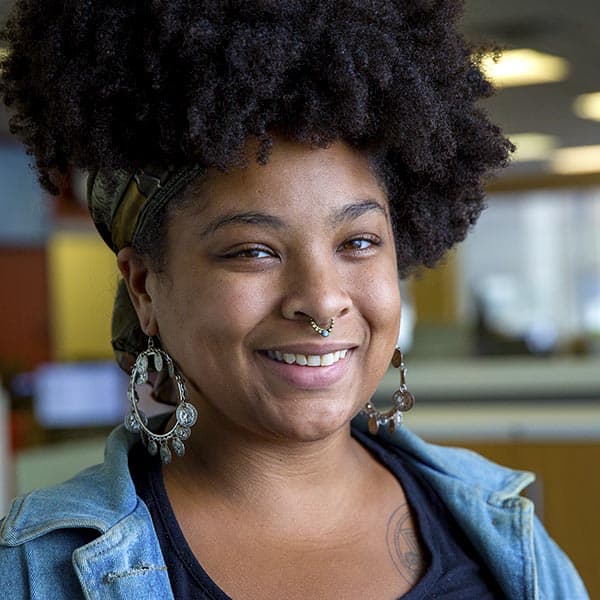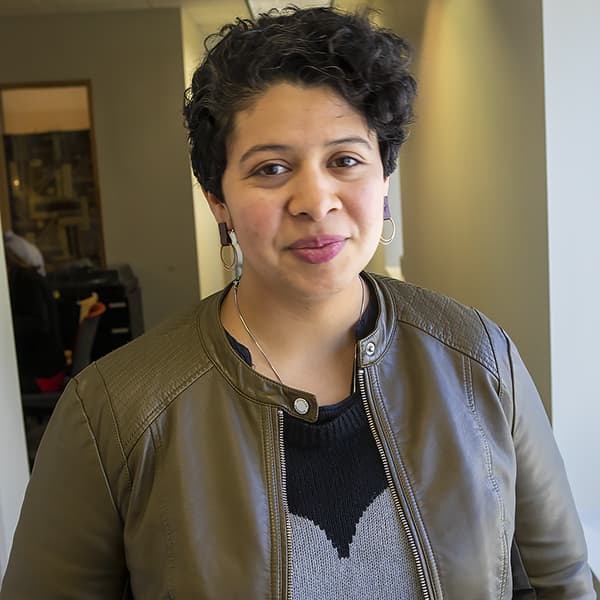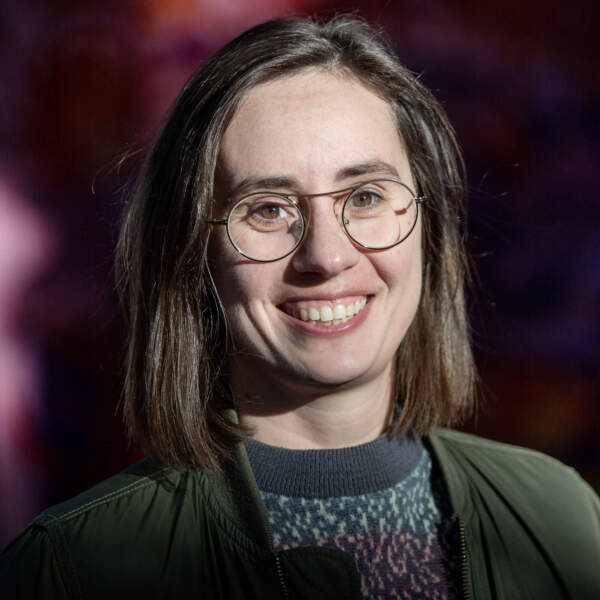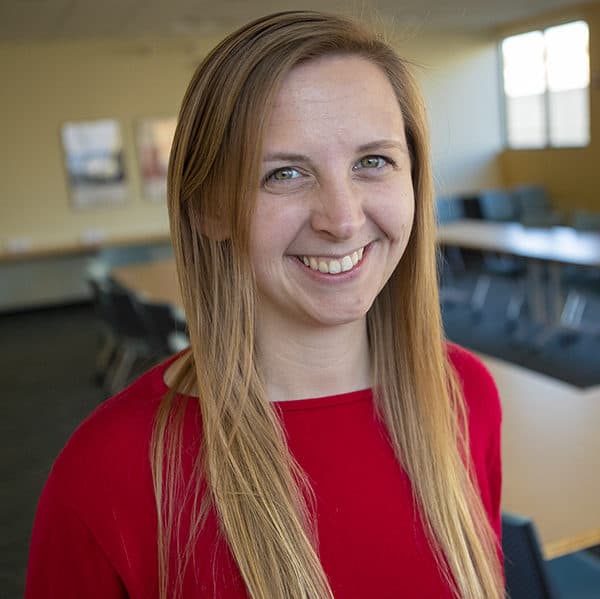Advertisement
The Year In Arts & Culture
10 Visual Art Installations In Boston That Made Us Think In 2019
As the year draws to a close, The ARTery team has spent some time reflecting on the visual art in our world. In 2019, a lot of what we saw in the Boston area reacted to our political moment, recontextualized artists that were overlooked in the canon, and reflected a booming Boston that's hungry for public art.
Here are 10 exhibits or installations that really stayed with us — that made us think about the future of art, about the purpose of it.
— Amy Gorel
'Graciela Iturbide's Mexico'
Museum of Fine Arts
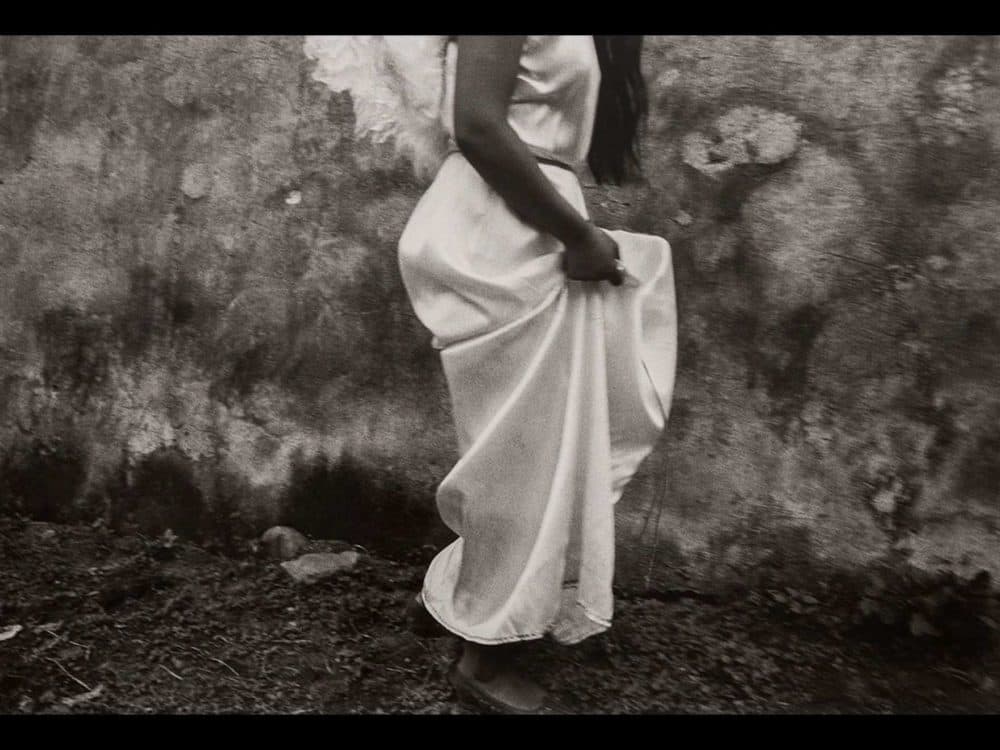
Few art exhibitions will stay with me for the rest of my life. One of the few that will be cemented in my memory forever is the MFA's stunning exhibition of contemporary Mexican photographer Graciela Iturbide's 125 black and white photographs. Iturbide is not interested in capturing the realness of the moment. Instead, her lens reveals the whimsical, the dreamlike in the quotidian. Divided thematically, one of the sections of the show explores how Mexicans wrestle with death while still living. When I saw the exhibition, I was grieving the recent death of my father in a car accident. For the first time in weeks, I felt solace in Iturbide's surreal photographs. Finally, through her artistry, I could see that death could be redeemed through beauty.
— Maria Garcia
Chanel Thervil's 'Enigma: Reactions to Racism'
Urbano Project
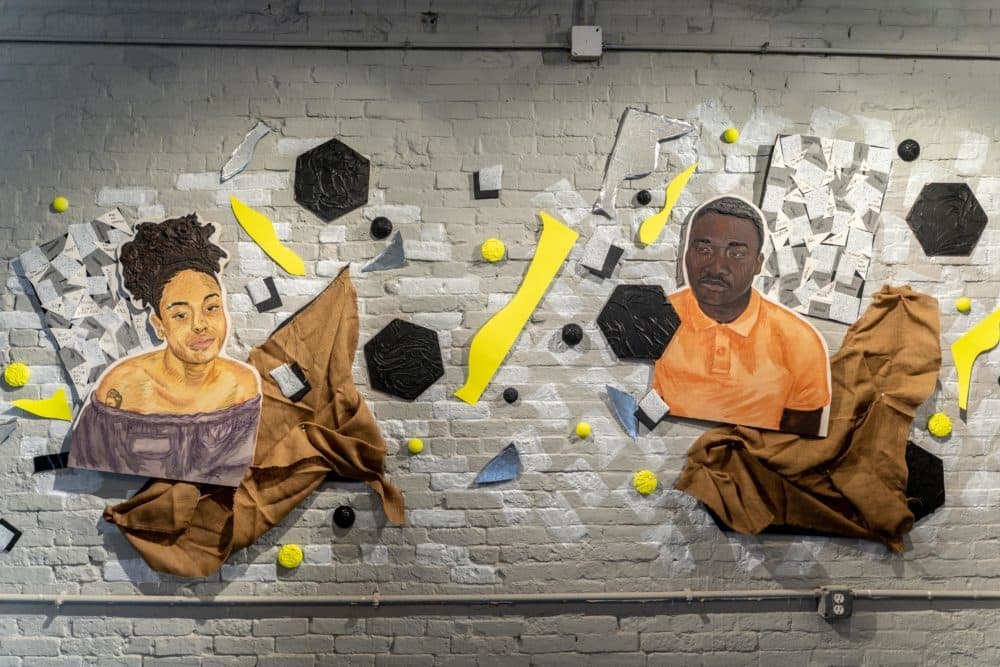
At first glance, Chanel Thervil’s exhibit “Enigma” seemed to capture local artists of color in various states of happiness and serenity. When we spoke, Thervil told me that this was a frequent reaction she heard from visitors who viewed her multimedia pieces. “I know for a fact that I'm seducing people with what seems like a really beautiful, affirming, uplifting image,” Thervil said. But to me and other viewers of color, “Enigma” wasn’t about happiness — it was about the uncomfortable spaces people of color tread when experiencing racism and microaggressions. “Enigma” was a commentary on the invasive but subtle nature of racism — something Thervil increasingly experienced after she moved from New York City to Boston. “Because Boston is such a liberal city, there are a lot of people who don’t think they’re racist when they are,” Thervil said. An MP3 player and headphones were attached to each portrait so visitors could hear the subjects’ stories, straight from the subjects themselves. It required visitors to really sit and think. This marriage of visual elements with auditory ones set Thervil's work apart, turning "Enigma" into a deep, incisive criticism of liberal racism. The exhibit gave language to a phenomena that so many of us experience but don't have the words to describe. “Enigma” mirrored how racism can be disguised as a prettily packaged “compliment” or comment. But once you begin to really look and listen, the “enigma” is slowly and surely unraveled.
— Arielle Gray
Problak's 'Breathe Life 3'
808 Tremont St., Boston
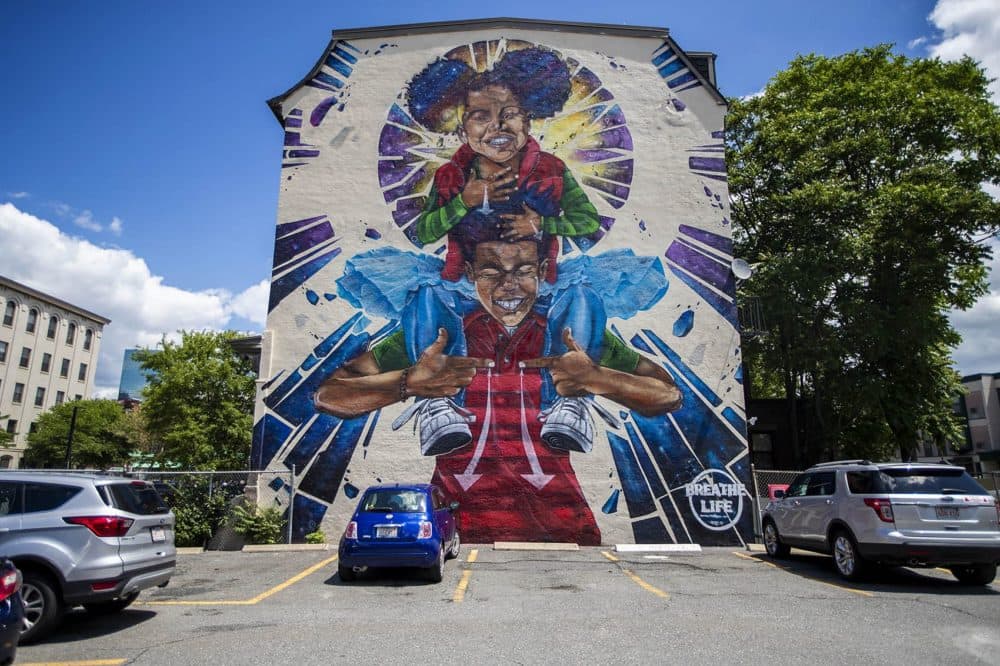
When I interviewed Problak about his almost completed mural, "Breathe Life 3," he told me that he wanted to use his “murals as mirrors.” He wanted the people in the community of Roxbury (of which he’s a native) to look at his work and see themselves reflected in it. When we were done with our interview, a person walking up the street paused to view the large mural. The woman told me the mural reminded her of herself and her older brother. Each person of color I spoke with passing by the mural had similar reactions — Problak’s work invoked a feeling of nostalgia and connectedness. They quite literally saw themselves and their loved ones in the three-story mural. Suddenly, “murals as mirrors” made a lot more sense to me. In the midst of a city-wide, nuanced conversation about street art and its role in gentrification, Problak knew that, to some, murals indicate the beginning of displacement and unwelcome change. But to him, his murals continue a long legacy of graffiti artists subverting traditional power structures by turning the walls of the city into their canvases. “We didn’t see ourselves in museums or galleries,” he told me. “But we saw ourselves represented on the walls of our city.” “Breathe Life 3” is so much more than a mural. It's a way to spark a dialogue, to share stories. It's also a testament to the beauty of street art that represents and reflects the communities living alongside it.
— Arielle Gray
Andy Goldsworthy 'Watershed'
deCordova Sculpture Park and Museum
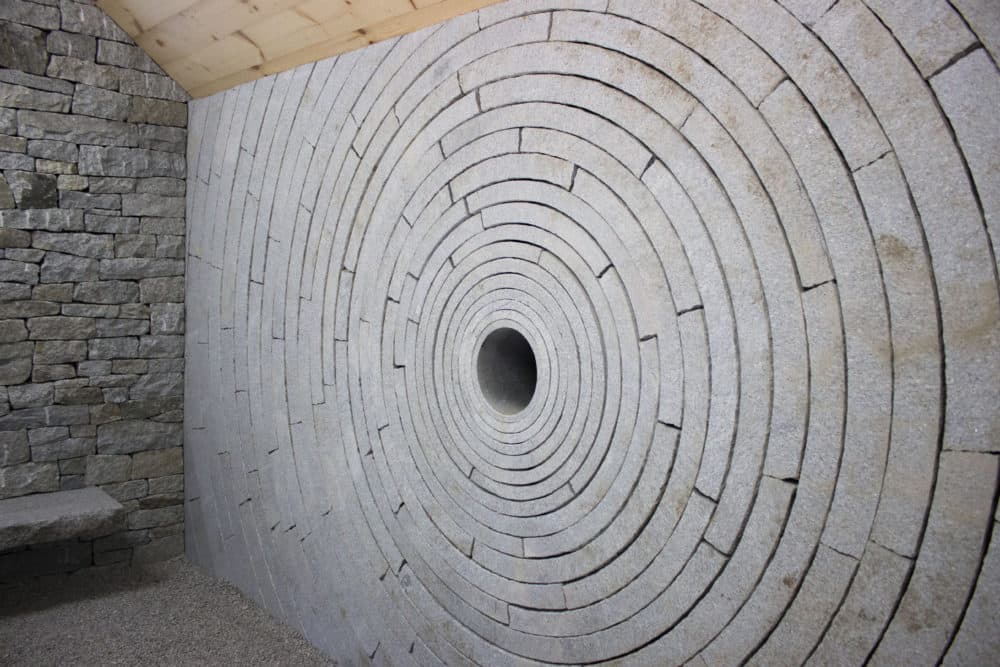
I’m all for thinking, but the art that often sticks with me most makes me feel something first. That’s why for me one of the most exciting outdoor art events of 2019 was the debut of British nature sculptor Andy Goldsworthy’s "Watershed” at the deCordova Sculpture Park and Museum in Lincoln. It’s his first permanent work in New England that’s accessible to the public, and I've been anticipating its arrival since a commission was announced 10 years ago. Goldsworthy’s many fans make pilgrimages to see his craggy, egg-shaped forms and serpentine walls at places including Storm King in the Hudson Valley (including me). Now we have a place to receive Goldsworthy’s subtle messages right in our own backyard. “The Watershed” is tucked behind the deCordova’s main building. It’s activated by rainwater and speaks to environmental issues like runoff. When a storm comes the usually quiet piece dances with the ferocity of nature. Water courses through an underground pipe to feed a stunning drain hole inside. Whatever the weather, there's a lot to contemplate there, but Goldsworthy presents his thoughts without telling us what to think or how to feel. Finding peace is getting harder these days and, in my mind, Goldsworthy’s “Watershed” couldn’t have arrived at a better time.
— Andrea Shea
Doug Aitken's 'New Horizon'
The Trustees of Reservations
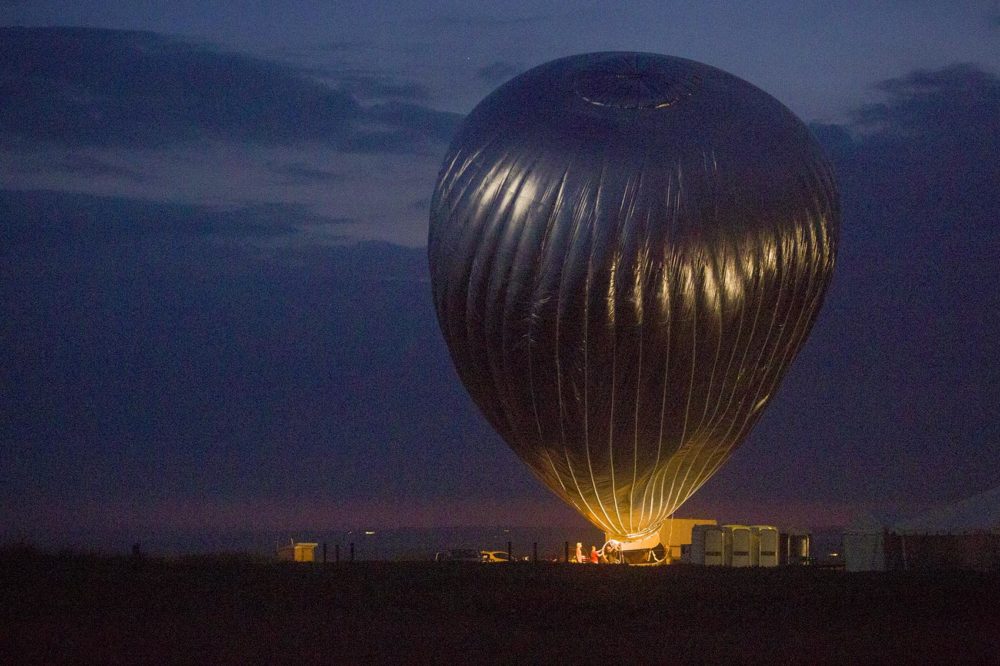
The ambitious collaboration between the Trustees, a Massachusetts conservation group, and the LA artist Doug Aitken was announced in the spring to much fanfare. Did it live up to the hype? Not really, but also, in a way, yes. The concept — a mirrored hot air balloon that reflected the landscape — was spectacular. But balloons are notoriously finicky, unable to fly in weather that’s too windy, hot or wet. So the people who paid $250 for a balloon ride and $40 for a concert under a tethered balloon on one of the Trustees’ scenic properties were almost universally disappointed. I was lucky enough to catch a test ride on a still and clear evening before the installation officially debuted; after we landed, someone who happened to see the balloon passing over the road described an eerie visitation from above, like a door opening in the sky. This, I am sure, is what Aitken imagined when he conceived the piece, and I wish he and the Trustees had embraced the inherent fickleness of the balloon, and its equalizing properties, when they planned its rollout. No amount of money will buy you balloon-worthy weather, after all. And no ambitious project is without risk. What's notable here is that it was a conservation group, not a museum, that dared to take that risk, providing a tantalizing glimpse of what might be possible for contemporary art in the future.
— Amelia Mason
Nick Cave's 'Augment'
Now + There
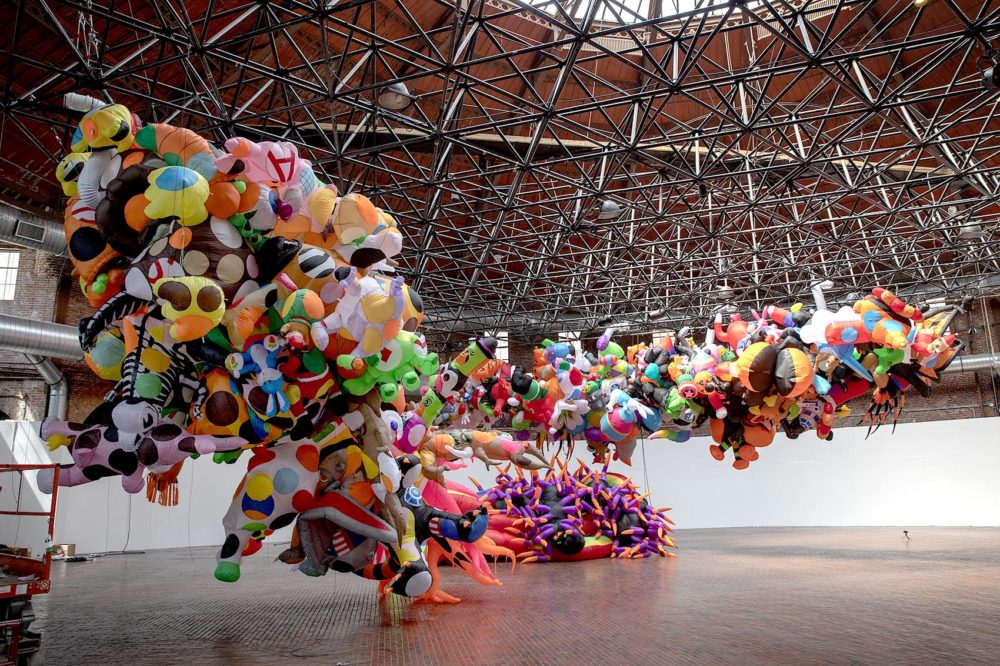
This summer, the Boston public art presenter Now + There collaborated with the Chicago artist Nick Cave for a community-oriented public art installation called “Augment.” For the project, Cave created a collection of huge inflatable sculptures as well as a colorful vinyl mural that was mounted on the side of an old building in Dorchester. The sculptures, which were made out of holiday lawn ornaments Frankensteined together, were classic Cave: inviting and digestible but resonating with deeper meanings. In September, Now + There invited the community to parade the sculptures from the Cyclorama in the South End, where they were on view to the public for free, to a site in Upham’s Corner. Created in a spirit of joy and inclusiveness, and in partnership with local community organizations, “Augment” offers a model that I hope more art presenters will emulate.
— Amelia Mason
Rashin Fahandej's 'A Father's Lullaby'
Institute of Contemporary Art
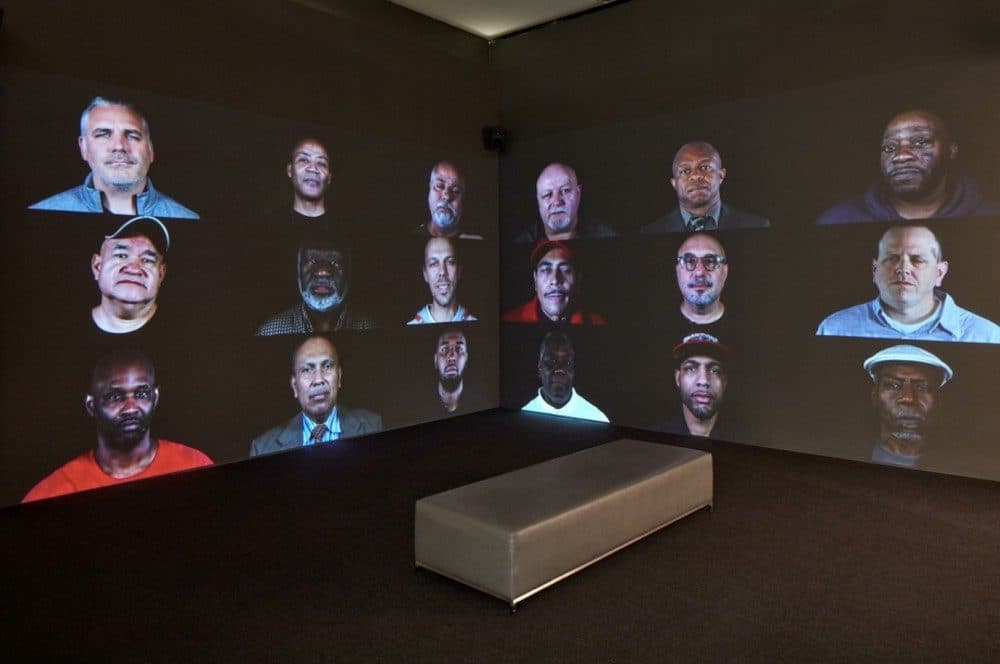
This Foster Prize-winning piece at the ICA is a multi-year, multi-platform installation that serves as a poetic reflection — as artist and creator Rashin Fahandej calls it — of the suffocating and systemic impact of mass incarceration on low-income communities and communities of color. Fahandej recorded fathers touched by incarceration singing a lullaby or song from their childhood or a piece of music that they have passed on to their own children. The men, seen on a black background on an immersive digital screen in a gallery at the ICA, sing or tell anecdotes as graphics that represent the astronomical rise of incarceration sweep through the gallery like a glittering, beautiful wave. The opposite side of the gallery can be activated through human touch to play anecdotes from the men. It may sound overwrought or too on-the-nose, but Fahandej's tender treatment of the lullabies allows us a poetic avenue to analyze the structural problem of mass incarceration.
— Maria Garcia
Yayoi Kusama's 'Love Is Calling'
Institute of Contemporary Art
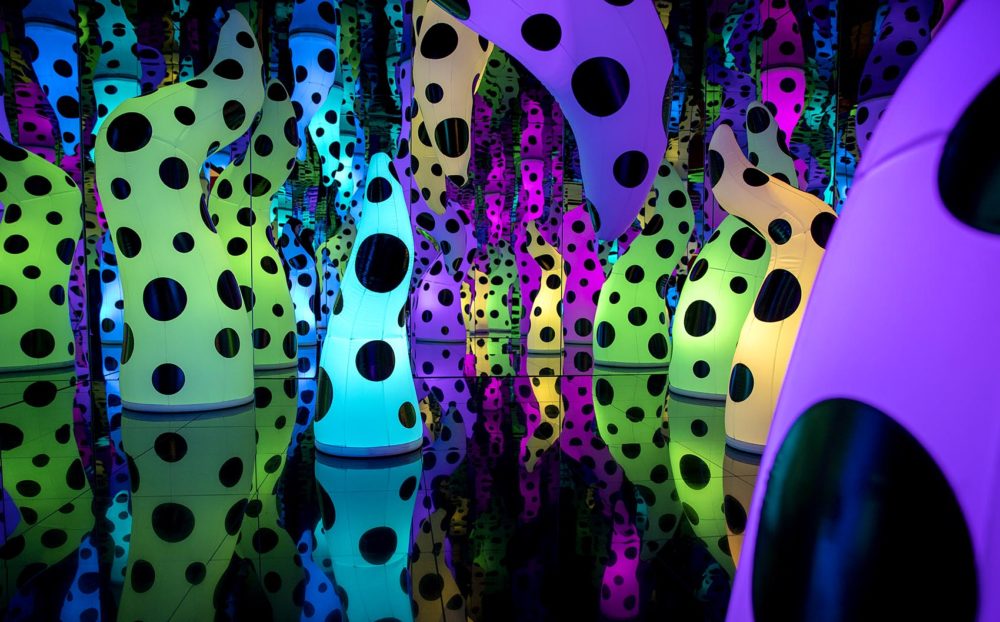
This year, the Institute of Contemporary Art in Boston acquired an infinity mirror room by the 90-year-old Japanese artist Yayoi Kusama. These clever installations, which allow the viewer to experience a vertiginous feeling of endless space, are massively popular and, it bears mentioning, extremely Instagrammable. The acquisition was a huge coup for the ICA, which has only been building its permanent collection for a little over a decade. I must admit to being a touch underwhelmed when I visited the room in September — it’s the largest of Kusama’s mirrored environments but one of the least sparkly, and you only get a couple minutes inside. Also, I think it’s pretty much impossible for anything to completely live up to such massive hype. That said, I found the accompanying exhibit, which illuminated Kusama’s historically under-recognized influence on contemporary art, fascinating and beautiful. Kusama has a lot more to offer than two minutes inside a reflective box. The ICA's mirror room gives us a jumping off point to appreciate her work and helps solidify her place in the canon.
— Amelia Mason
'Child's Play'
Society of Arts and Crafts
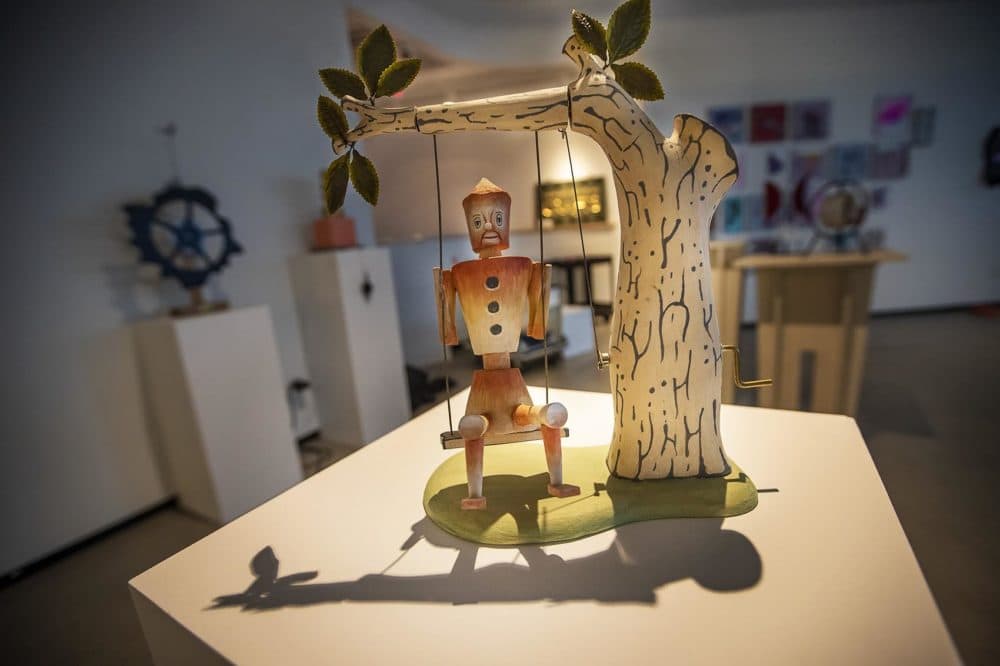
Immigration, climate change, racism — these are but a few of the topics favored by today’s artists, who no doubt find themselves affected by the dire political mood. But just because a work of art takes on an important issue doesn’t necessarily make it good or impactful. At the Society of Arts and Crafts’ recent exhibition “Child’s Play,” I was struck by how exciting and profound a more lighthearted concept can be. The exhibit riffed on toys, childhood and play, inviting visitors to interact with pieces that were by turns whimsical and thought-provoking. And I found the exhibit’s underlying premise — that the creative process is something anyone can participate in — quietly political in its own way.
— Amelia Mason
'Ancient Nubia Now'
Museum of Fine Arts

The "Ancient Nubia Now" exhibit at the Museum of Fine Arts confronts the erasure of an early civilization by dissecting misinformation and exposing viewers to the majesty and grandeur of its art and objects. The MFA funded excavations at sites in southern Egypt and northern Sudan between 1913 and 1932. There, for more than 3,000 years Nubian kingdoms rose and fell. They grew in power and conquered enemies including, at one point, their neighbors on the Nile, the Egyptians. Yet because there are few written accounts of what ancient Nubia was actually like, early archeologists and explorers still interpreted what they found there by way of Egyptian propaganda found in hieroglyphics. For decades, the story of Nubia was told through the lens of cultural bias and white supremacy. Egypt was cast as the more advanced civilization, while Nubian culture, its cities, temples and pyramids were made lesser. This vast exhibition with its hundreds of sculptures, metalwork, and jewelry is an attempt to correct the mistakes of the past, to show Nubia for what it truly was: a world in and of itself within the Sudanese Nile Valley that flourished in antiquity and whose accomplishments are finally beginning to be recognized. The exhibitions distinguishes itself as one of the MFA’s largest exhibitions in years and another way that these institutions are grappling and confronting past and present issues of race and power dynamics through art.
— Cristela Guerra
